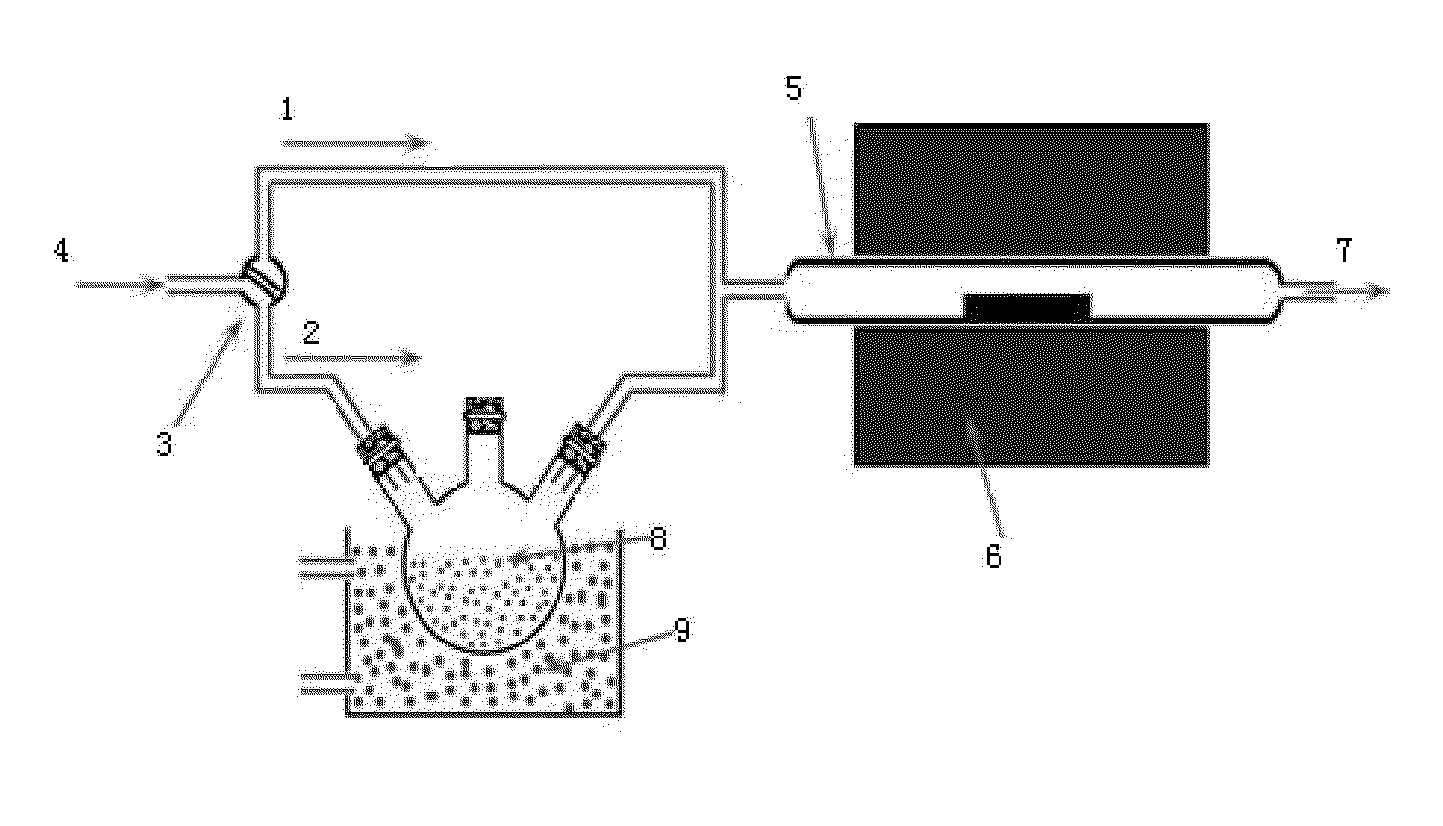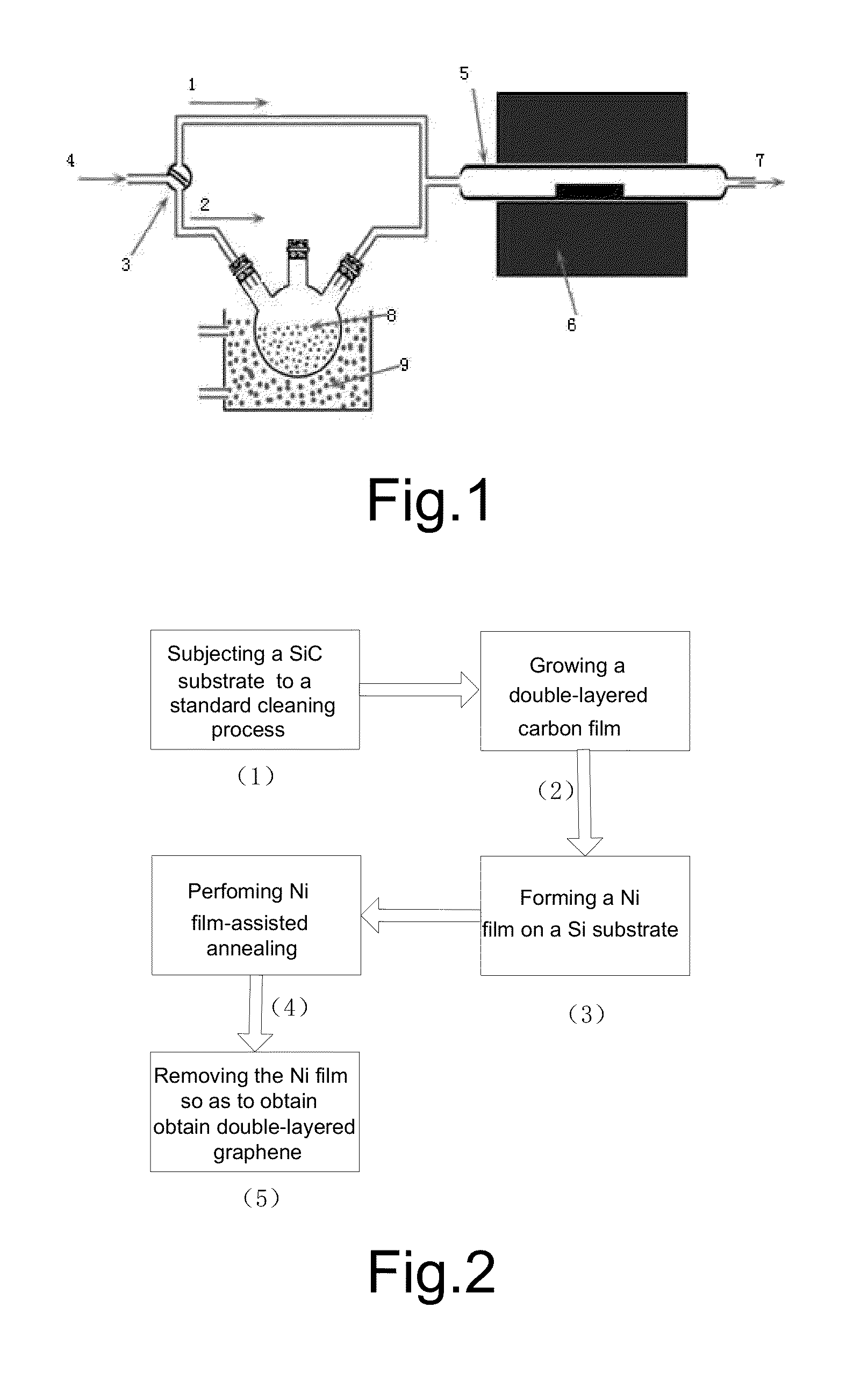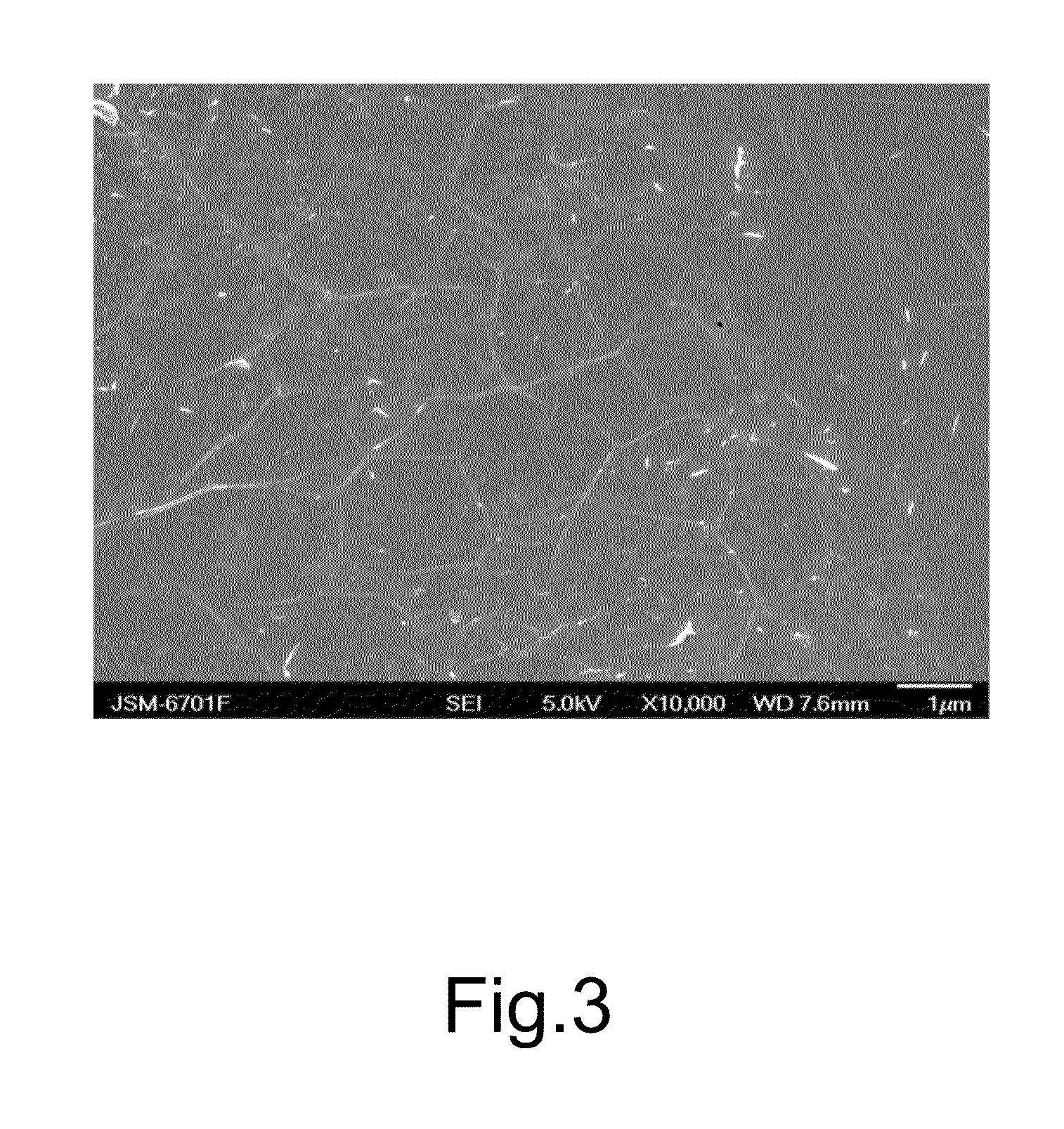Process for Preparing Graphene on a SiC Substrate Based on Metal Film-Assisted Annealing
a metal film and substrate technology, applied in the field of microelectronics, can solve the problems of loss of many characteristics of the graphene monolayer, high cost of monocrystal sic thermal decomposition, and low porosity, and achieve simple and energy-saving process. , the effect of low porosity
- Summary
- Abstract
- Description
- Claims
- Application Information
AI Technical Summary
Benefits of technology
Problems solved by technology
Method used
Image
Examples
example 1
[0042]Step 1: a 6H-SiC substrate was cleaned so as to remove contaminants from its surface.
[0043](1.1) the 6H-SiC substrate sample was immersed in NH4OH+H2O2 for 10 minutes, taken out and dried so as to remove organic residues from the surface of the sample; and
[0044](1.2) the 6H-SiC substrate sample was then immersed in HCl+H2O2 for 10 minutes, taken out and dried so as to remove ionic contaminants.
[0045]Step 2: a quartz tube was loaded with the cleaned 6H-SiC substrate, degassed and heated.
[0046](2.1) the cleaned 6H-SiC was placed into the quartz tube 5, and the quartz tube 5 was placed into the resistance furnace 6;
[0047](2.2) the air tightness of the whole preparation device was checked, then Ar gas was introduced from the gas inlet 4 at a flow rate of 80 ml / min, while controlling Ar gas to enter into the quartz tube through the first channel 1 by the three-way valve 3, and the quartz tube was degassed for 30 minutes so as to discharge the air inside the quartz tube from the gas...
example 3
[0065]Step A: the surface of a 6H-SiC substrate was cleaned by firstly immersing the substrate sample in NH4OH+H2O2 for 10 minutes, taking it out and drying it so as to remove organic residues from the surface of the substrate sample substrate; and then immersing the sample in HCl+H2O2 for 10 minutes, taking it out and drying it so as to remove ionic contaminants.
[0066]Step B: the cleaned 6H-SiC was placed into the quartz tube 5, and the quartz tube was placed into the resistance furnace 6; the air tightness of the whole preparation device was checked, then Ar gas was introduced from the gas inlet 4 at a flow rate of 80 ml / min, while controlling Ar gas to enter into the quartz tube through the first channel 1 by the three-way valve 3, and the quartz tube was degassed for 30 minutes so as to discharge the air inside the quartz tube from the gas outlet 7; and the power of the resistance furnace 6 was turned on to elevate the temperature of the quartz tube to 1150° C.
[0067]Step C: the ...
PUM
| Property | Measurement | Unit |
|---|---|---|
| Length | aaaaa | aaaaa |
| Pressure | aaaaa | aaaaa |
| Flow rate | aaaaa | aaaaa |
Abstract
Description
Claims
Application Information
 Login to View More
Login to View More - R&D
- Intellectual Property
- Life Sciences
- Materials
- Tech Scout
- Unparalleled Data Quality
- Higher Quality Content
- 60% Fewer Hallucinations
Browse by: Latest US Patents, China's latest patents, Technical Efficacy Thesaurus, Application Domain, Technology Topic, Popular Technical Reports.
© 2025 PatSnap. All rights reserved.Legal|Privacy policy|Modern Slavery Act Transparency Statement|Sitemap|About US| Contact US: help@patsnap.com



